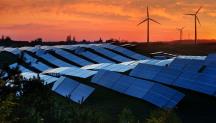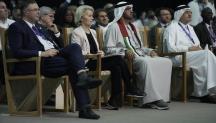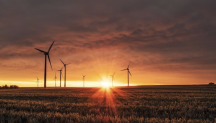Outlook
Tracking progress
-
11 TW
Targeted global renewable power capacity by 2030
Contact us
Send a messageTripling renewable power capacity by 2030
Progress in renewable power capacity deployment
Global pledge
Renewable energy is key to our efforts to limit global temperature increase to 1.5°C above pre-industrial levels and achieve the Sustainable Development Goals. Its vital role was affirmed at the Climate Conference COP28 in the United Arab Emirates, marking a historic moment when participating parties signaled the end of the fossil fuel era in global climate negotiations and committed to a global renewable goal.
The outcomes of the first Global Stocktake led to the historic UAE Consensus, which provides a clear roadmap for shaping the future of the global energy system. Transitioning away from our current reliance on fossil fuels necessitates immediate and targeted efforts towards tripling renewable power capacity by 2030.
The goal of tripling renewable energy capacity stands as a significant affirmation of IRENA’s efforts, originating from the Agency’s flagship publication, the World Energy Transitions Outlook (WETO). According to the 1.5°C scenario outlined in the report, tripling global renewable power generation to over 11,000 gigawatts (GW) – or 11 terawatts (TW) by 2030 requires an average addition of more than 1,000 GW annually until 2030.
Achieving this global pledge demands stronger policy actions, increased investment, and enhanced global collaboration. This underscores the critical importance of the remaining years of this decade in steering the world towards the 1.5°C Pathway and realizing the Sustainable Development Goals.
As the custodian Agency, IRENA remains committed to reviewing progress and identifying gaps towards the target on an annual basis. This ongoing assessment is vital for supporting the tracking of the COP28 commitment and maintaining momentum towards the year 2030 and beyond.
=






